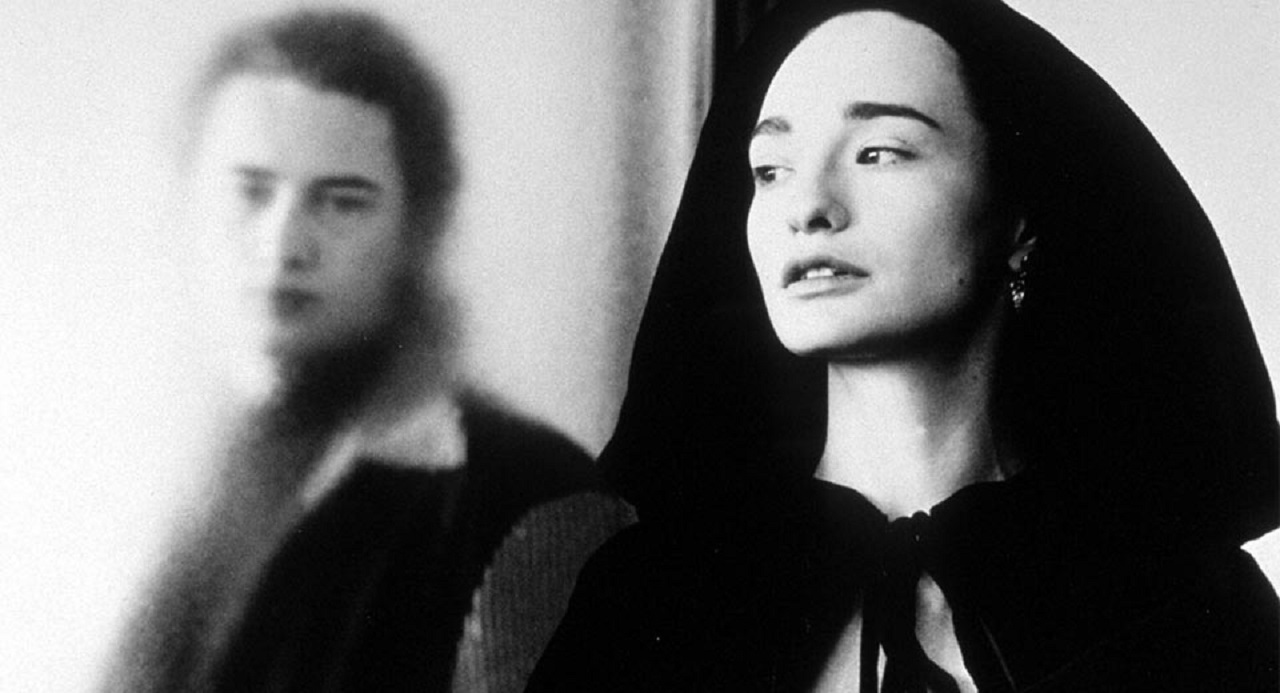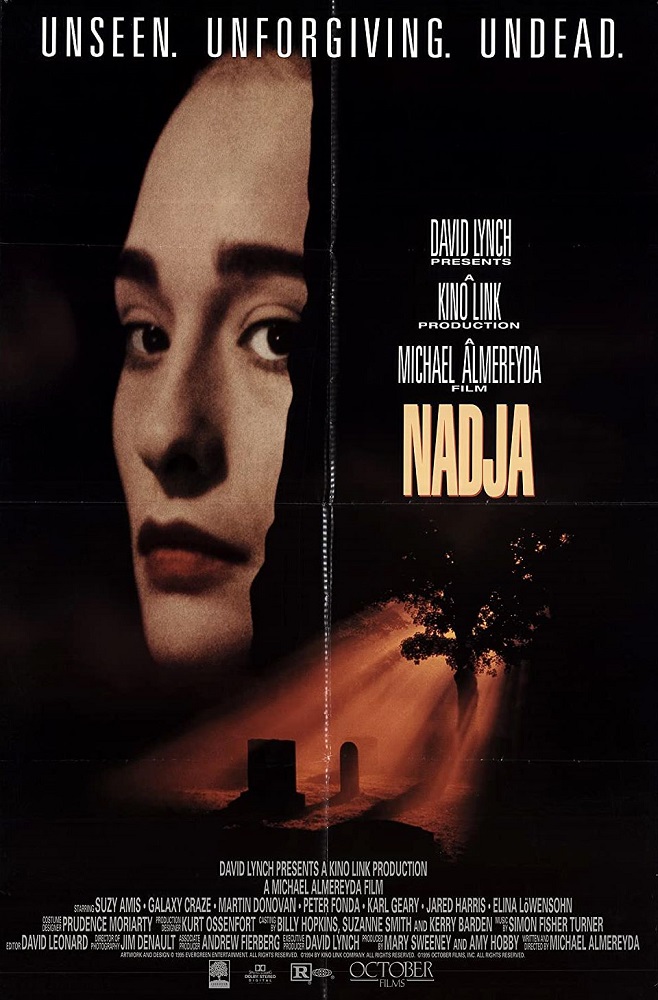Crew
Director/Screenplay – Michael Almereyda, Producers – Amy Hobby & Mary Sweeney, Photography (b&w) – Jim DeNault, Music – Simon Fisher Turner, Special Effects – Arthur Jolly, Production Design – Kurt Ossenfort. Production Company – Kino Link.
Cast
Elina Lowensohn (Nadja), Peter Fonda (Dr Van Helsing), Galaxy Craze (Lucy), Martin Donovan (Jim), Suzy Amis (Cassandra), Karl Geary (Renfield), Jared Harris (Edgar)
Plot
Dracula’s daughter Nadja wanders New York City, melancholy and driven by her need for blood. She seduces and drinks from the depressed Lucy. Meanwhile, Lucy’s husband Jim is asked to help his friend Van Helsing who has been arrested for staking Dracula. The two of them then realise that Nadja is drinking from Lucy. As they try to hunt her down, Nadja and her self-described ‘slave’ Renfield flee back to Romania.
The postmodern vampire film is very much upon us. Nadja came out a matter of months before Abel Ferrara’s The Addiction (1995), which was similarly shot in black-and-white and had vampire searching for the meaning of it all. Nadja is an uncredited, almost a scene-for-scene reworking of Universal’s first Dracula sequel Dracula’s Daughter (1936). It has a determined effort to be cult written all over it – it is executive produced by no less than David Lynch who even put his own money up to complete the film and also puts in a cameo as a morgue attendant hypnotised by Nadja. It features two Hal Hartley regulars, Martin Donovan and Elina Lowensohn, as well as an alternate soundtrack, featuring cultish bands like Portishead and The Verve.
It is all very postmodern – rather than a predator, the vampire is a neurasthenic social sophisticate who engages in blood-drinking with methods not dissimilar to someone engaging in one-night stands. Immortality is used to echo an inner melancholy – for the principal victim becoming vampirised equates with angst and uncertainty. The soundtrack is filled with a series of often haunting voiceovers. It is beautifully photographed in black-and-white (although the frequent jumps into pixelated break-up become more annoying than striking).
Director Michael Almereyda’s camera almost seems to conduct a love affair with the pale, aloof beauty of Romanian actress Elina Lowensohn, serenely following her as she glides through the night in a cowled hood. She lends the centre of the film a melancholic majesty. There is one particularly striking shot with her gliding along while smoking a cigarette with the camera in the foreground seemingly floating on air, while pursuers come in the background. All of this gives Nadja a mesmerisingly dreamy beauty.

There is also a considerable sense of humour to the film, particularly when it comes to some of the interpolations of the tropes of the vampire genre – Van Helsing is played against type by Peter Fonda seemingly still in Easy Rider (1969)-mode as an eccentric figure, wearing mirror shades and riding into action on a bicycle; and when Nadja cites her family lineage, she counts names such as Romanian dictator Ceaucescu among the Dracula line.
Nadja was the debut of Michael Almereyda. Many of Michael Almereyda’s films conduct startling revisions of old themes. Almereyda next made the striking modern mummy film The Eternal/Trance (1998), then went onto the modernised Hamlet (2000) and the baffling and arty sf film Happy Here and Now (2002) about the search for a woman who has vanished on the internet. For the next decade, Almereyda’s work has consisted of a handful of documentaries, before returning to fiction with another modernised Shakespeare adaptation Cymbeline (2014), the acclaimed Experimenter: The Story of Stanley Milgrim (2015), his best film to date, the sf film Marjorie Prime (2017) set in a future where people recreate holograms of their departed loved ones, and the biopic Tesla (2020). Almereyda also wrote the appealingly offbeat science-fiction film Cherry 2000 (1987).
(Nominee for Best Cinematography at this site’s Best of 1994 Awards).


